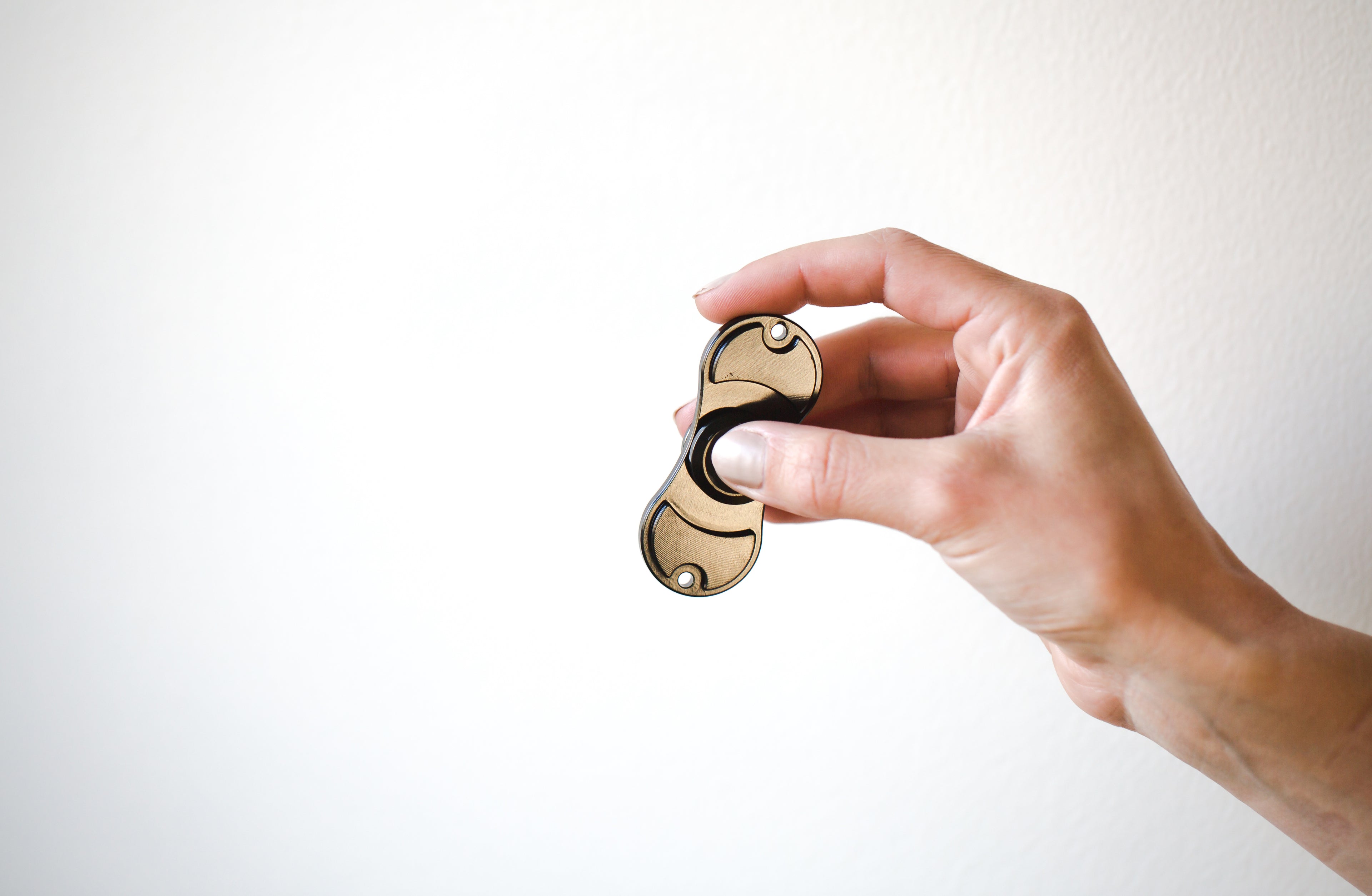
Navigating the Storm: Managing Sensory and Emotional Overload in a Fast-Moving World
Introduction to Sensory and Emotional Overload
Have you ever been in a scenario where everything appears to be overwhelming? Excessive noise, a stifling crowd, intense heat, and unrelenting demands create a flood of information that disrupts your ability to manage the situation effectively and stay focused on your objectives. You might be undergoing sensory overload.
This overwhelming sensation can also extend to your emotions when intense feelings like stress hinder your daily life and prevent you from functioning normally. This is known as emotional overload.
In this article, we will explore the root causes of these overloads and present effective management techniques, along with tips to help you navigate more efficiently through the hustle and bustle of daily life and fully enjoy the present moment.

The Modern World's Toll on Our Senses and Emotions
In our modern lives, we frequently contend with the challenges of sensory and emotional overload. The continuous bombardment of stimuli, such as loud noise, notifications and the increasing volume of information, can feel overwhelming, hindering our ability to find crucial moments of tranquility needed for recharging.
Concurrently, escalating responsibilities and the perpetual demand for rapid adaptation in an ever-changing world add to our emotional burden, complicating the navigation and management of our emotions.
The Intersection of Emotional and Sensory Overload
Moreover, emotional and sensory overload often go hand in hand, creating a complex interaction where heightened emotions amplify the impact of sensory stimuli, and vice versa. For instance, when a person is already stressed or anxious, they may become more sensitive to stimuli.
Similarly, excessive sensory stimuli, such as a dense crowd in a music festival, can trigger intense emotional reactions in some individuals.
This intersection underscores the importance of considering both emotional and sensory aspects in managing overload to promote your overall well-being.
Decoding Sensory and Emotional Overload
Understanding Sensory Overload Causes
Sensory overload happens when your nervous system receives an overwhelming amount of sensory information from one or more of your senses, exceeding your brain's efficient processing capacity.
This imbalance can lead to negative reactions like stress, frustration or fear, ranging from mild to severe, and disrupting your usual functioning. All five senses - sight, hearing, touch, taste, and smell - can be impacted, and sensory overload may manifest in different ways, often triggering a fight, flight, or freeze response.
Although anyone can experience sensory overload, particularly when tired, hungry, or stressed, it is more prevalent in children and individuals with specific conditions like autism, ADHD (Attention Deficit/Hyperactivity Disorder), PTSD (Post-traumatic Stress Disorder), or SPD (Sensory Processing Disorder), as they tend to exhibit heightened sensitivity to sensory stimuli.

Unpacking Emotional Overload: Impact on Daily Life
Similarly, emotional overload occurs when an overwhelming intensity of emotions surpasses your typical capacity to manage them. Usually, this phenomenon can be triggered by excessive stress, relationship issues, or traumatic events.
This state can impact your everyday life by hindering your focus on tasks, affecting your physical and mental well-being, and disrupting your relationships with others.
Recognizing the Signs of Overload
Identifying Sensory Overload Signs and Symptoms
While symptoms of sensory overload can vary from one individual to another, here are some typical signs and symptoms you might encounter:
- Enhanced Sensitivity: Feeling overwhelmed by noise, bright lights, tactile sensations, temperature, visual stimuli, or odors, etc.
- Intense Emotional Reactions: Experiencing strong emotions like anxiety, fear, irritability, restlessness, heightened stress levels, and even panic.
- Physical Responses: Experiencing symptoms such as headaches, dizziness, sweating, or nausea.
- Difficulty Focusing: Struggling to concentrate on a task because of concurrent or distracting sensory stimuli.
- Mental and Physical Exhaustion: Feeling mentally drained and physically fatigued after prolonged exposure to overwhelming sensory experiences.

Key Indicators of Emotional Overload
Much like sensory overload, emotional overload manifests through a range of emotional and physical indicators, including heightened and overpowering emotions, challenges in concentration, physical symptoms like headaches and fatigue, irritability, distorted thought patterns, disruptions in sleep, withdrawal from social interactions, compromised decision-making, and a diminished interest in activities that were once pleasurable.
Strategies for Overcoming Overload
In the upcoming section, we offer a range of strategies and tips designed to help you effectively prevent and manage emotional and sensory overload situations. Explore these insights to enhance your ability to navigate overwhelming experiences and promote a sense of inner peace.
Building a Foundation: Wellness Practices for Balance
To tackle and conquer episodes of overload, it's vital to establish wellness practices that bring balance and enhance overall well-being. Here's a concise guide to infuse easy, universal well-being habits into your daily life, aiding in the upkeep of a healthier lifestyle.
Mindfulness and Meditation
Embracing mindfulness and meditation can truly support you in staying present, steering clear of overwhelming thoughts and emotions. Consider trying mindful breathing, exploring guided meditation, or engaging in soothing body scan exercises to discover what resonates best with you on your journey toward well-being.
Physical Activity as an Emotional Regulator
Integrating regular physical activity into your routine, whether through fitness activities, yoga, or simple walks in the nature, can serve as a powerful stress reliever. Indeed, physical exercise stimulates the release of neurotransmitters like endorphins, dopamine, and serotonin, contributing to an improved mood and enhanced emotional regulation.
Maintaining an Healthy Diet and Proper sleep
Finally, it’s important to take care of yourself. Eat balanced meals and drink enough water to stay healthy. Make sure to get enough good-quality sleep – it's key for both clear thinking and emotional well-being.

Navigating Sensorial Overload: Practical Tips
The following tips will help you manage sensory overload. Remember, it's a personal journey, so take your time to find what works best for you. Try different techniques and integrate them into your daily routine to create a more supportive environment.
Know your Triggers
Recognize and understand the specific sensory stimuli, situations, or environments that trigger overload in you is crucial. By consistently monitoring these triggers, you can better recognize patterns and establish effective coping strategies tailored to your individual needs.
Creating a Sensory-Friendly Environment
Upon acknowledging the specific triggers contributing to sensory stress, take steps to establish a sensory-friendly environment for handling sensory overload. Designate a dedicated space where you can seek refuge during overwhelming moments. Select calming colors, regulate lighting to reduce brightness, and mitigate noise concerns with soft materials or white noise machines. Incorporate comfortable furniture and integrate sensory tools such as fidget items or textured objects.
Sensory Aids and Their Role
Sensory aids, such as noise-canceling headphones and fidget toys, are essential tools for effectively managing sensory overload. In bustling and loud environments, noise-canceling headphones provide immediate relief by minimizing auditory stimuli, while fidget items serve as helpful distractions from overwhelming stimuli and outlets for excess energy. Building a personalized sensory toolkit tailored to your preferences can empower you to navigate challenging situations, reducing the impact of sensory sensitivities and enhancing your overall well-being.

Emotional Overload Management Techniques
In addition to general well-being practices and sensory overload management tips, here are some techniques that may help you prevent and cope with emotional overload:
- Grounding Techniques: Focus on your senses, breathing, or touch to stay connected with the present to avoid overwhelming feelings.
- The power of journaling: Write down your thoughts and emotions can help you by providing a constructive outlet for expressing feelings, gaining clarity, and fostering self-reflection and problem-solving.
- Establishing Boundaries: Learn to set limits to protect your emotional well-being, avoiding overwhelm and prioritizing self-care.
- Time Management: Prioritize and break tasks into smaller steps to ease the feeling of being overwhelmed by responsibilities.
Seeking Support: When to Look for Professional Help
If sensory or emotional overload significantly affects your daily life, consider seeking professional help. Therapy can help manage anxiety and develop personalized strategies for handling triggering situations.
The Unique Role of Fidgeting and Stimming
Fidgeting: A Gateway to Focus and Calm
Fidgeting, frequently misconstrued as a distraction or limited to individuals with ADHD, can be a valuable tool for improving focus and relieving stress for anyone in need.
Indeed, purposeful fidgeting, like using stress balls or tactile objects like fidget jewelry, offers a sensory outlet that redirects surplus energy, allowing individuals to sustain concentration on tasks.
Moreover, the repetitive nature of fidgeting can have a calming effect on the nervous system, aiding in the reduction of stress and anxiety levels.
Stimming and Sensory Regulation: Understanding the Benefits
Stimming, or self-stimulatory behaviors, is a crucial tool for sensory regulation. For individuals with heightened sensitivities, like those with autism, engaging in repetitive actions serves as a natural self-soothing coping mechanism.
Stimming plays a key role in modulating sensory input, fostering emotional well-being, and providing a comforting effect on the nervous system.

Adaïr Jewelry: A Wellness Ally
Design with Purpose: Adaïr’s Approach to Fidget Jewelry
Recognizing the escalating stress and stimuli in modern life and the limited availability of high-quality and aesthetically pleasing sensory or fidget tools for adults, Adaïr Jewelry embarked on designing everyday premium jewelry for play.
Our mission is clear: to empower individuals distracted and stressed by their daily environment to find peace within themselves and renewed energy through our jewelry designed for play, ethically sourced and Swiss made.

Spotlight on Adaïr Products: Tools for Managing Overload
Adaïr jewelry provides a unique solution for addressing emotional and sensory overload. Designed with the purpose of offering sensory stimulation and facilitating motor movements, these jewelry pieces act as an anchor to assist in self-regulating overwhelming emotions, relieving stress, and sustaining focus amid daily challenges.
Consider Adaïr Jewelry as your personal, on-demand well-being companions, and integrate them into your daily life and routines for an engaging, aesthetically beautiful, and high-quality sensory and nervous outlet.
Your Journey to Equilibrium
A Message of Hope and Resilience
Take command of your journey towards emotional equilibrium, recognizing that you're not navigating this path alone. Engage in open conversations with friends and family to garner the support you need, and don't hesitate to reach out to professionals if necessary. Equip yourself with the strategies outlined in this article and leverage sensory tools to navigate life's challenges.
Remember, everyone deserves to experience the tranquility of inner peace.
Explore Adaïr Jewelry’s Collection A: Begin Your Path to Well-Being
To embark on this journey to inner peace, explore Adaïr Jewelry's 'Collection A' now, which showcases a necklace inspired by authentic metal brain teasers.
When emotions or sensations become overwhelming, the Brain Teaser offers a grounding experience, promoting focus on sensory stimulation. While wearing it, delicately manipulate the two pendants to solve the puzzle.
Take a moment to clear your mind, engage discreetly in this mindful activity, and experience a sense of relaxation accompanied by renewed focus.


